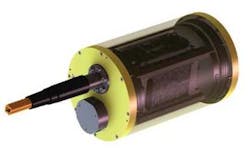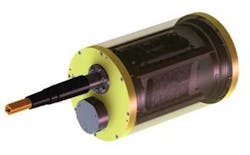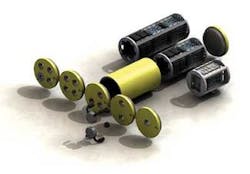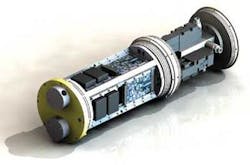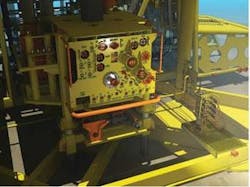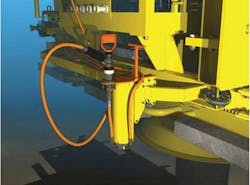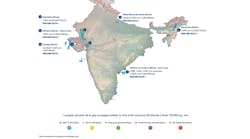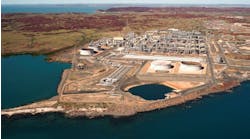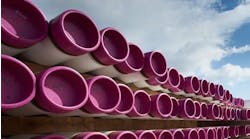Martin Broadhurst - Aker Solutions
Operators of mature subsea fields face a growing challenge to maximize hydrocarbon recovery off marginal reserves. By upgrading subsea functionality and instrumentation, production can be both enhanced and extended.
Traditionally, these upgrades have been both complex and costly, and involved either changing or redesigning the original control system. In response to this, Aker Solutions – previously Aker Kvaerner – has created the PodEx – a module that integrates new functions and instrumentation directly into an existing subsea control system.
Traditional subsea control systems are designed for monitoring and control of subsea production systems. Until recently, however, these systems had not been considered suitable for an extended role in process optimization.
Advances in subsea instrumentation technology require not only more data throughput, but also the ability for direct transparent communication between the topside control system and/or third-party instrumentation vendor application and subsea instrumentation. True transparent communication embedded within an existing control system is not always successful and can be difficult to implement.
By separating production control from optimization, a new class of monitoring system can be introduced into existing subsea infrastructure to enhance its capabilities. This new system bypasses the subsea control system, while using existing infrastructure, thus providing subsea field operators with a means of installing new functionality without changing the existing control system.
Spare subsea electrical conductors for power and communication routing can be used, or can co-exist with an existing control system. Existing subsea data and power infrastructure can be used to communicate increased well or reservoir data to topside data systems for analysis and process optimization.
Applications include:
- Integration of third-party instrumentation
- Condition monitoring
- Sand detection/monitoring
- Vibration monitoring
- Leak detection
- Subsea cameras
- Multi-phase flow meter
- Wet-gas meter
- Downhole functions/digital completions
- Pressure/temperature sensors
- Valve control
- Subsea HPU control and monitoring
- Subsea Isolation Valves (SIV)
- Mini electrical/hydraulic subsea control module.
The topside rack provides power and communication to the subsea module. The rack can be mounted into existing SPCU/EPU cabinets or can be installed in a separate cabinet. Nominally, the rack has a height of 3U in a 19-in. (48-cm) cabinet. The topside power and communication rack can be configured for single or redundant capabilities.
For a stand-alone interface, an internal power supply feeds the subsea module. A co-existence interface does not require topside power supplies since the existing SPCU/EPU power supplies are used to power the subsea module.
The topside power and communication rack normally does not contain any software-based equipment. The system’s modem has an I/O interface to allow direct connection to a topside’s SAS system or to third-party instrument interface equipment.
The electronic test unit (ETU) consists of a PC with software to communicate with the subsea module for commissioning, housekeeping, and maintenance functions. It is connected via the topside power and communication rack.
The subsea module is a standardized atmospheric canister housing power supplies, modems, fiber management boards, PLCs, and instrumentation vendor interface cards. The atmospheric canister is designed for up to 3,000 m (9,842 ft) operational depth and is manufactured and tested to IWIS requirements as defined in ISO13628, Part 6. The system also can be used for IWIS Option 2 and 3 applications.
Electrical glass-penetrators normally are used that have externally fitted oil-filled back-shell interfacing to a pressure and temperature compensated electrical distribution system. The module also can be fitted with dry-mate connectors and interface to third-party fiber optic penetrators.
The subsea module comprises standardized parts that are scalable and can be configured to meet specific requirements. The canister length and penetrations can be adjusted to suit the amount of electronic equipment.
Subsea mechanical interfaces
Aker Solutions’ new subsea modules are compact. They can be installed either prior to host structure deployment, or deployed and retrieved by an ROV. Although the subsea module is standardized, the mechanical interface can be designed to suit specific installations. Typically, installation is done using an existing guide funnel on the host structure, although other installation arrangements are feasible.
An integral part of the subsea solution is the modem technology that facilitates direct communication between the subsea instrumentations and topside controls or vendor software. A number of modem communications options are feasible with the system including analogue, digital, and DSL powerlines, and fiber optic.
The module consists of the following main components:
Topside (power and communication) rack
- Power supplies (stand-alone)
- Modem
- Topside communication interface(s).
Subsea module
- Power supplies
- Modem
- Control, measurement, and monitoring
- Atmospheric canister
- Structural interfaces.
Electronic test unit (ETU)
Laptop or 19-in. (48-cm) rack PC with SW to monitor housekeeping data.
